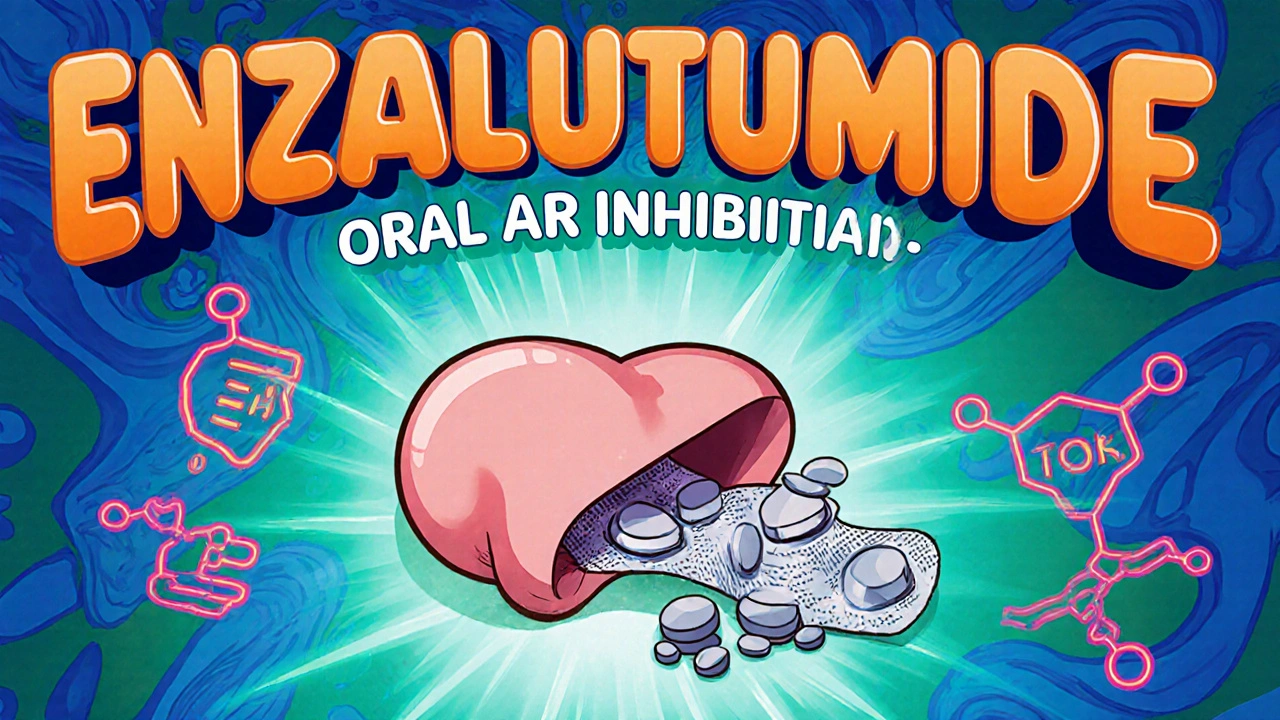Enzalutamide – What You Need to Know
When working with Enzalutamide, a next‑generation androgen receptor antagonist used primarily for advanced prostate cancer. Also known as Xtandi, it blocks the receptor’s activity and helps stop tumor growth. This drug has changed the treatment landscape for men battling late‑stage disease, offering a targeted option where older hormones fell short. enzalutamide delivers a clear pharmacologic action, but understanding its place among other therapies is crucial for safe, effective use.
Prostate cancer, the most common cancer in men, drives the need for powerful medicines. Prostate cancer, a malignancy arising from the prostate gland that often depends on male hormones for growth can progress despite standard hormone suppression, which is why newer agents matter. When the disease moves beyond the prostate or resists first‑line treatment, clinicians look for drugs that hit the hormonal pathway more aggressively.
One of the core concepts behind Enzalutamide is its classification as an Androgen receptor inhibitor, a class of drugs that bind to androgen receptors and prevent testosterone and dihydrotestosterone from activating cancer cells. By locking the receptor in an inactive state, Enzalutamide reduces signaling that fuels tumor cells. This mechanism sets it apart from older anti‑androgens that only partially block the receptor, giving patients a stronger, more consistent response.
The drug shows its biggest impact in Metastatic castration‑resistant prostate cancer, a stage where cancer spreads beyond the prostate and no longer responds to surgical or chemical castration. In this setting, the cancer continues to thrive even when testosterone levels are low, making a direct receptor blocker essential. Clinical trials have demonstrated that Enzalutamide extends survival and delays disease progression in these patients, offering a lifeline when options are limited.
Enzalutamide rarely works in isolation; it’s often paired with Androgen deprivation therapy, the standard approach of reducing testosterone production using surgery or drugs like luteinizing‑hormone‑releasing hormone (LHRH) analogues. This combination amplifies the hormonal blockade, tackling the cancer from two angles – lowering hormone supply and stopping any remaining hormone from acting on cancer cells. The synergy between ADT and Enzalutamide has become a cornerstone for managing advanced disease.
Practical Considerations When Using Enzalutamide
Starting Enzalutamide usually means a once‑daily oral dose, but the exact schedule depends on the patient’s liver function and other meds. Monitoring blood pressure, liver enzymes, and any neurological signs is key because side effects like fatigue, hot flashes, or, in rare cases, seizures can appear. Patients should be educated about medication adherence; missing doses can quickly reduce effectiveness. It’s also wise to review other prescriptions for drugs that might increase the risk of seizures or interact with the liver enzyme CYP2C8, which processes Enzalutamide.
With this background, the articles below cover everything from how alcohol can worsen edema to the link between certain diuretics and tinnitus – all topics that intersect with the broader conversation about medication safety and patient well‑being. Dive in to see detailed explanations, real‑world tips, and actionable advice that can help you navigate treatment choices, manage side effects, and stay informed about the latest pharmaceutical insights.
Addressing Common Concerns and Misconceptions About Enzalutamide
Clear answers to the most common worries about enzalutamide, covering side effects, drug interactions, effectiveness, resistance and practical management tips.
